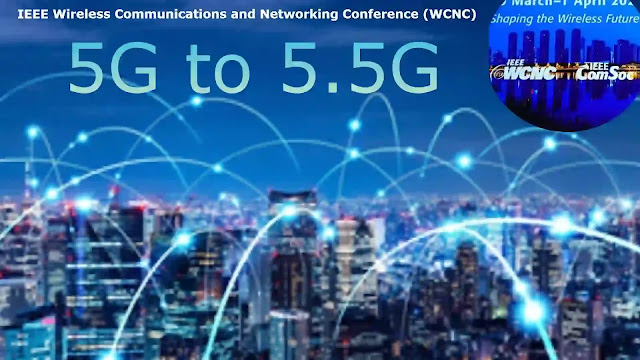Wireless Innovation Is An Endless
At the 2021 IEEE Wireless Communications and Networking Conference (WCNC 2021), Dr. Zhu Peiying, a Huawei Fellow leading research on 5G wireless systems at Huawei Technologies Canada, delivered a speech titled “5G to 5.5G: Wireless Innovation Is An Endless Frontier”. WCNC is a premier IEEE event in the wireless research field that brings together experts across the academia and industry to discuss and promote the development of wireless communications and network technologies.
Dr. Vannevar Bush once described science as an endless frontier. In her speech, Dr. Zhu said that, in a way, the wireless industry can also be such a frontier for its endless opportunities for innovation. 5G has seen massive commercial rollouts, which are starting to yield positive gains while exciting sustained innovation of 5G technologies.
5G has been adopted commercially at staggering rates. Compared with 2019, the number of commercial 5G networks, terminal types, and users has multiplied by 18, 17, and 250 times, respectively, registering over 140 networks, 550 terminal types, and 250 million users. 5G has also transformed user experience and advanced industrial digitalization. AR/VR users have grown by 35% annually, and over 5,000 industry practices such as 5G port and 5G steel have begun to see the market size effect.
As 5G continues to hit new milestones on the commercialization roadmap and the 5G industry breeds new technologies, new frontiers of 5G are becoming clear. To evolve 5G to 5.5G, the growing demands for immersive experience such as XR and holograms as well as the diversified and complex IoT demands such as machine vision and V2X must be met.
“The industry has identified four factors to realize the 5.5G vision. First, incumbent 5G capabilities have to be reinforced to catalyze 5G industry development. Second, high-speed real-time experience is a must to enjoy immersive applications such as XR and holograms. Third, uplink-centric networks must be built to provide 10-fold uplink speed for industrial digitalization. And finally, 5G network capabilities must be scaled out to support new business opportunities,” said Dr. Zhu.
The question is, what defines 5.5G? Expanding from the three standard 5G scenarios defined by the ITU — eMBB, mMTC, and URLLC, Huawei proposes three new additions — Uplink Centric Broadband Communication (UCBC), Real-Time Broadband Communication (RTBC), and Harmonized Communication and Sensing (HCS), to form the 5.5G matrix. In these scenarios, Huawei predicts that 5.5G will vastly outperform 5G in many aspects. For example, continuing from 5G, 5.5G will cut down the cost-per-bit of eMBB by 10 times, deliver higher uplink capabilities by using UCBC to meet the requirements of 80% of toB scenarios, provide Gbps downlink rates at a low latency of 5 ms to increase the number of XR users multiple times with RTBC, and enable full-scenario high-precision indoor positioning with low-power centimeter-level positioning and wide-area high-resolution sensing to enhance the safety of self-driving cars and elder care in specific areas.
It takes three to five years for a new technology to normalize operations and reach maturity. Uplink enhancement, for example, requires much time to diversify new terminals in addition to extensive research on technologies such as multi-band uplink aggregation and uplink massive array. It also takes time to prepare the supporting policies and industry as 5.5G will need more spectrum resources in the sub-100 GHz band. To realize the 2025 vision, Dr. Zhu called on the industry to finalize 5.5G standardization in 3GPP Release 18 and beyond.
Each generation of mobile communications technology has reigned for about a decade, before being superseded by a new standard. Since the 1980s, after four generations of mobile communications technologies, connection of people has essentially become a reality. Now, with the fast commercialization of 5G technologies, we are closer to realizing the connection of everything. In the future, 5.5G will lead us to the era of intelligent Internet of everything.
6G will come after 2030. What will be the vision of new generation network? In next 10 years, intelligence will be everywhere in our lives, and it will be more distributed than centralized. “The network will do much more than just transmit data. It will become a distributed intelligent entity that can merge the real and digital worlds”, Dr. Zhu predicted.
Dr. Zhu concluded that, “Moving toward 2025 and 2030, an exciting future awaits the wireless industry. Together with partners, Huawei hopes to explore the endless frontier of 5.5G and beyond.”

Very Informative post admin! The term wireless innovation system has become a buzzword in the digital age as many industries and even modern people use it in their homes. In simple words, the wireless innovation unit uses a Wi-Fi vibration sensor to detect the temperature of a particular object. To get these wireless innovative systems contact UbiBot today!